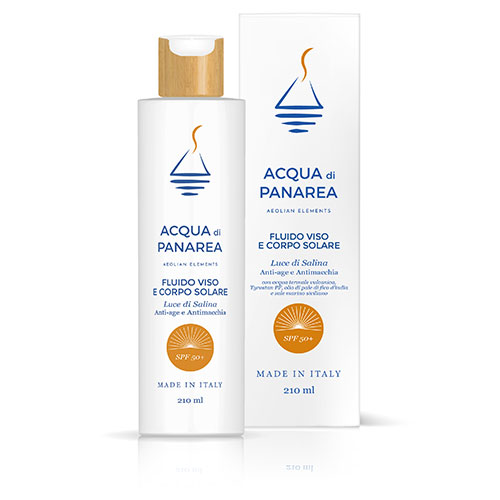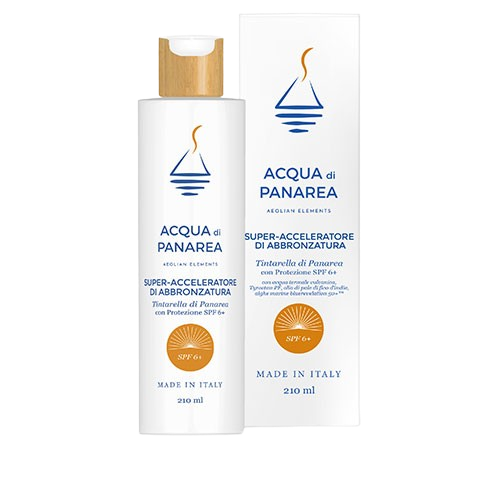La sunscreen helps you protect your skin, 365 days a year, but it is important to know how to choose the absolute best one. The first thing you need to know when making this choice is that the following are to be preferred oxybenzone- and octinoxate-free sunscreens.
These are two chemical filters which are used in sunscreens to protect the skin from ultraviolet rays. Despite this, however, a number of research studies have been conducted in recent years that have highlighted significant concerns precisely about the security and on theenvironmental impact Of these substances.
Specifically, oxybenzone and octinoxate have been associated with. potential adverse effects on human health, including endocrine disorders e skin allergies. On the other hand, their widespread use has been shown to have a Deleterious impact on marine ecosystems, particularly on corals.
For these very reasons, but not only these, creams that have other filters inside them, both chemical and physical, would be preferable.
See also the guide to the sunscreens recommended by dermatologists.
What are oxybenzone and octinoxate
Oxybenzone and octinoxate are. two chemical ingredients which are often used in sunscreen formulations and other skin care products to provide protection against ultraviolet (UV) rays.
In particular, oxybenzone is a organic compound which belongs to the benzophenone family, while octinoxate is a foreign formed by the reaction between methoxy cinnamic acid and 2-ethylhexanol.
Oxybenzone acts absorbing, reflecting and dissipating UV rays, particularly UVB rays and some UVA rays. Octinoxate, on the other hand, acts by absorbing UVB rays, preventing sunburn and other damage caused by sun exposure.
Both substances have been used for sunscreens because of their protective function of the skin, but also because of their being easily integrated into different cosmetic formulations without significantly altering the consistency or appearance of the product. In addition, they are very inexpensive, which is why they are still found in so many sunscreen products and creams.
Despite this, however, it is necessary to delve into the concerns surrounding both substances, so as to understand why it is preferable to Avoid sunscreens with oxybenzone and octinoxate.
The health risks of oxybenzone and octinoxate
Oxybenzone and octinoxate are, as mentioned, chemical ingredients commonly used in creams with UV protection. Although they are effective in preventing skin damage caused by the sun, recent studies have raised several concerns about the potential risks to human health.
Oxybenzone can interfere with the hormonal system. Some recent studies have shown that this substance can cause some hormonal imbalances.
For this very reason, studies are looking at possible Worrying effects on children and adolescents, that is, on subjects in whom the endocrine system is still developing.
In males, it may adversely affect testosterone production, while in females it may alter estrogen levels, and this may have problems with development and reproduction. In addition, oxybenzone could also adversely affect the kidney function.
Although there is no conclusive evidence that these chemicals harm humans, oxybenzone has been detected in the breast milk of women using cosmetics containing UV filters, as well as in urine, blood, semen, and even amniotic fluid. This has alarmed and sparked a climate of concern related to the use of this substance.
Like oxybenzone, also octinoxate can alter thyroid function and affect levels of reproductive hormones. In fish, for example, it caused changes in estrogen and androgen levels, suggesting similar potential risks for humans. This substance can be absorbed through the skin and is frequently found in urine samples of people who regularly use products containing this ingredient.
The use of this type of product has been associated with allergic dermatitis and other skin reactions. People with sensitive skin may experience itching, redness, and irritation after application of oxybenzone and octinoxate products.
In response to these concerns, it might be a good idea to look for some safer alternatives for sun protection. Physical sunscreens, such as zinc oxide and titanium dioxide, offer UV protection without penetrating the skin or interfering with the endocrine system.
The effects on the environment
Oxybenzone and octinoxate have also been the focus of numerous studies for their Negative impact on marine and terrestrial ecosystems. Growing awareness of these effects has led to increased attention on the need to regulate or ban the use of these substances to protect the environment.
One of the main concerns related to the use of oxybenzone and octinoxate concerns their impact on corals. In particular, these chemical compounds have been associated with the phenomenon of the coral bleaching, a condition in which corals expel symbiotic algae (zooxanthellae) living in their tissues, causing a loss of color and vitality.
This phenomenon takes the form of a response to environmental stresses and can lead to the death of coral if conditions do not improve. Oxybenzone, therefore, can damage the DNA of corals, preventing their development.
In addition to corals, oxybenzone and octinoxate are. Toxic to a wide range of marine organisms. These chemicals can interfere with the Growth and development of fish, invertebrates and algae.
The toxicity of these substances also extends to other marine invertebrates, such as the sea urchins and the shrimp, which show abnormalities in development.
Le coastal areas and the coral reefs are particularly vulnerable to the accumulation of oxybenzone and octinoxate. These substances are introduced into the marine environment through people swimming or playing water sports and can accumulate to concentrations that are dangerous to marine life, especially in highly touristed areas.
All this involves a ripple effect on the marine environment and on the entire ecosystem. Coral reefs are the perfect habitat for many marine species, providing them with food and protection. Damage to these reefs, therefore, can lead to a decrease in biodiversity And to the loss of vital resources.
In light of growing warnings about the potential environmental impacts of oxybenzone and octinoxate, some regions and countries have begun to regulate their use. Hawaii, for example, has banned the sale of sunscreens containing oxybenzone and octinoxate to protect its coral reefs. Palau and parts of the Caribbean, have followed suit, taking similar measures to preserve their marine ecosystems.
Our toxic-free sunscreens
Sunscreens are essential to protect the skin from the sun's harmful ultraviolet (UV) rays, which can cause sunburn, premature aging, and increase the risk of skin cancer.
Despite this, however, it is worth noting that many traditional sunscreens contain chemical ingredients, such as oxybenzone and octinoxate, which can pose significant risks to human health and the environment.
For this reason, it is important to choose some toxic-free solar. Sunscreens that do not contain toxic ingredients reduce the risk of skin irritation, allergic reactions e endocrine disorders.
The natural ingredients, which are contained within our sunscreens, are safe and less aggressive on the skin, especially if you have a sensitive skin.
As mentioned, systemic absorption of chemicals through the skin can pose long-term risks to your health, whereas natural sunscreens minimize this risk.
Light of Salina is a 50+ sunscreen fluid face and body, which has a protective and also anti-aging action. This product protects your skin and acts to prevent premature aging.

Luce di Salina has a number of valuable active ingredients and shielding filters inside, making it a perfect sunscreen for thedaily use and to protect the epidermis from early sun exposure.
L'Argan oil, one of the main ingredients, deeply nourishes the skin, improving its elasticity and softness. Le Plant stem cells from red grapes promote the processes of cell regeneration naturally and have a powerful antioxidant action which protects the skin from free radical damage.
L'hyaluronan ultra-low molecular weight is another key ingredient within Saline Light, which gives you a deep hydration, restoring firmness and tone to the skin. This is very useful for facial skin stressed and parched by sun exposure.
Without a doubt, one of the main ingredients of Luce di Salina is thethermal water of volcanic origin, rich in minerals and trace elements, which keeps skin hydrated, supple and glowing, while also reducing irritation and redness that can be caused by sun exposure.
An innovative ingredient of Luce di Salina is the Tyrostan PF, a special melanogenesis activator. This active ingredient, derived from Tyrosine, enhances the tan by stimulating and accelerating the melanin production process. The result is an even, long-lasting amber complexion with enhanced natural UV protection.
Also Panarea tan is a product that does not contain oxybenzone and octinoxate, but a number of active ingredients that are perfect for your tan and for protecting your skin.

It is a super tanning enhancer with SPF 6+, with an anti-aging and toning action. The formula of Panarea Tinttarella is enriched with a mix of antioxidants highly effective and bioavailable, performing a nourishing and anti-aging action. Inside you can find theargan oil, which is known for its nourishing properties.
Le plant stem cells instead promote cell regeneration processes, while also providing strong antioxidant action that fights free radicals and slows skin aging.
L'hydrolyzed hyaluronic acid It penetrates into the deeper layers of your skin and provides you with intense, long-lasting hydration, helping to prevent dehydration caused by sun exposure.
In addition, thethermal water of volcanic origin, rich in minerals and trace elements, works by brightening and protecting the skin. Oceanic algae, such as the BlueRevelation 50+™, are rich in omega 3 and omega 6, powerful antioxidants that protect the skin from environmental damage.
Also in Panarea Tinttarella is Tyrostan PF, a tyrosine derivative, which helps the skin develop an amber complexion while also increasing natural protection against UV rays.
See also the guide to the best sunscreens.
How to choose a sunscreen without chemical filters
Choosing a sunscreen without chemical filters is critical if you want to protect your skin naturally and safely. Oxybenzone and octinoxate have been associated with potential risks to your health and the environment, but natural alternatives are safer and more sustainable. But How to choose a sunscreen without chemical filters?
The first step is to read the label of the product. You should look for sunscreens that use physical or mineral filters that create a barrier on the skin that reflects UV rays, offering immediate and long-lasting protection without penetrating the skin.
Opt for products that contain natural and organic ingredients. In addition to mineral filters, look for moisturizing and soothing components such as argan oil, aloe vera, coconut oil, jojoba oil, or shea butter. These ingredients not only protect the skin from the sun's rays but also nourish and moisturize it, improving the skin's overall health.
Make sure the sunscreen Contains no parabens, phthalates, synthetic fragrances and other chemical additives that can irritate the skin or cause allergic reactions.
Choose one Sunscreen with an adequate sun protection factor (SPF) to your needs. For daily use, an SPF 30 is generally sufficient, but if you want intense protection, an SPF 50 or higher is recommended.
Prefer sunscreens that have been dermatologically tested. This ensures that the product is safe for use on all skin types, including sensitive skin.
Sunscreens without chemical filters are often more environmentally friendly. Chemical sunscreens can harm corals and marine life, while mineral filters are generally considered safe for the environment. Choose products labeled "reef-safe" or "eco-friendly" to ensure that your purchase does not contribute to environmental degradation.
For further study: Best anti-wrinkle, anti-aging and anti-staining facial sunscreen.




